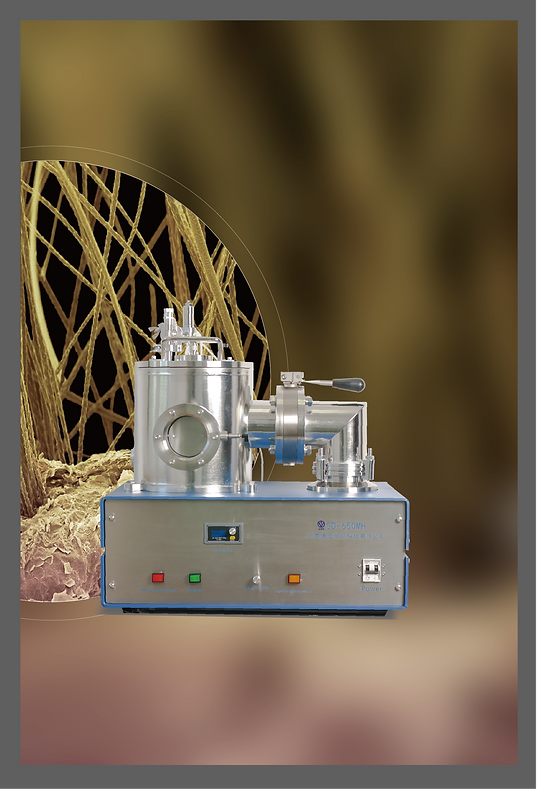ความสม่ำเสมอของการสะสมความหนา
บทนำ
การเคลือบแมกนีตรอนสปัตเตอริงถูกนำไปใช้อย่างกว้างขวางในการทับถมพื้นที่ขนาดใหญ่ และความหนาสม่ำเสมอของฟิล์มบาง อัตราการสะสม อัตราส่วนการใช้ประโยชน์ของวัสดุเป้าหมาย และปัญหาอื่น ๆ ในอุตสาหกรรมการเคลือบได้รับความสนใจอย่างมาก
ไม่ว่าจะเป็นการเคลือบชิปเซมิคอนดักเตอร์ด้วยฟิล์มบางป้องกันหรือการเคลือบป้องกันแสงสะท้อนกับเลนส์แว่นตา วิศวกรกระบวนการจะต้องบรรลุข้อกำหนดความหนาบางอย่างเพื่อให้เป็นไปตามข้อกำหนดด้านประสิทธิภาพ ความสำคัญเท่าเทียมกันกับความหนาของฟิล์มคือความสม่ำเสมอของความหนา

ปัจจัยที่กำหนดประสิทธิภาพการสะสม
การทับถมเป็นกระบวนการที่ใช้ในการเคลือบวัสดุ (หรือฟิล์ม) บาง ๆ ลงบนพื้นผิว เป็นวิธีปฏิบัติทั่วไปในอุตสาหกรรมต่าง ๆ เช่น เซมิคอนดักเตอร์และนาโนเทคโนโลยี การทับถมของฟิล์มบางสามารถทำได้ด้วยเทคโนโลยีที่หลากหลายที่สามารถให้ฟิล์มตั้งแต่ฉนวน สารกึ่งตัวนำ ไปจนถึงโลหะ ภาพยนตร์เรื่องนี้สามารถทำหน้าที่ได้หลากหลายเท่าๆ กัน ซึ่งมีตั้งแต่ไดอิเล็กตริกระหว่างเลเยอร์ไปจนถึงการเชื่อมต่อระหว่างกัน

ความยืดหยุ่น
ความยืดหยุ่น ขอบเขตของความสามารถที่ระบบมี อาจเป็นปัจจัยสำคัญในการตัดสินใจว่าจะจัดหาระบบการสะสมประเภทใด นี่เป็นความจริงสำหรับสภาพแวดล้อม R&D มากกว่าการใช้งานในอุตสาหกรรมซึ่งมักต้องการโซลูชันเฉพาะ การทำความเข้าใจเกี่ยวกับวัสดุที่สามารถเคลือบได้ ขนาดวัสดุพิมพ์ ช่วงอุณหภูมิ ไอออนฟลักซ์ อัตราการสะสมตัว ความถี่ จุดสิ้นสุด และระบบการทำงานของแรงดันเป็นเพียงส่วนหนึ่งของข้อควรพิจารณา ความยืดหยุ่นยังเป็นคุณภาพของระบบที่ช่วยในการวางแผนสำหรับอนาคต ในการเปลี่ยนแปลงลำดับความสำคัญของ R&D และการมีระบบที่สามารถจัดการกับการเปลี่ยนแปลงเหล่านั้นได้นั้นมีประโยชน์ ชั้นบนสุดของการพิจารณาเหล่านี้คืองบประมาณ ระบบอาจมีราคาแตกต่างกันอย่างมาก ทั้งนี้ขึ้นอยู่กับประเภทของตัวเลือกเทคโนโลยี
รายงานผลการทดสอบสำหรับเครื่องเคลือบ VPI รุ่น:SD-900M
ภาพด้านซ้าย
Results & Conclusions
Shows the result of the X-ray diffraction of the Ga2O3 films growth with various O2 flow rates. The diffraction peaks located at 29.7°, 37.6°, and 58.4° originate from the 400, 402, and 603 of the β-Ga2O3, respectively. For the sample without the O2 flow rate, 400, 402, and 603 of the β-Ga2O3 diffraction peak coexisted; this suggests that the sample was polycrystalline. With the O2 flow rate increased from 0 to 4 sccm, the diffraction peak intensity of the 400 β-Ga2O3 decreased, while the intensity of both the 402 and 603 of β-Ga2O3 diffraction peak increased. Both of these two diffractions belong to the 201 plane family of the monoclinic Ga2O3. The above result illustrates that highly 201-textured β-Ga2O3 samples have been prepared and the orientation of crystal is gradually enhanced when oxygen flow increased. Furthermore, the full width at half maximum (FWHM) values of the 402 β-Ga2O3 peaks are 1.00°, 1.10°, 1.06°, and 0.96° for samples with the O2 flow rate increased from 0 to 4 sccm, respectively. The FWHM value is dependent on the O2 flow rate, and the results suggest a higher O2 flow rate results in improved crystal quality. The minimal FWHM is obtained at 4 sccm of the O2 flow rate, which means the grain size is the largest. The combined results of the XRD peak intensity and the FWHM value of the samples show that higher O2 flow rates lead to better quality.
In summary, in terms of the effect of oxygen flow on the structure, optical l properties of the Ga2O3 films have been investigated by XRD, EDX, AFM, transmission spectra, and PL spectra. With the increase in the oxygen flow rate, both the crystal quality and luminescence intensity of the sample first decreased and then enhanced. All these observations suggested that the reduction in the oxygen defect density is responsible for the improvement in the crystal quality and emission intensity of the material, however, there have been no reports about O2 flow rate on the properties of the Ga2O3 growth by RF magnetron sputtering. Our results were similar to those obtained by other techniques and the specific control of various experimental operating parameters. Vu found that the performance of β-Ga2O3-based photodetectors with a higher oxygen partial are better than those prepared at lower oxygen pressures. Wang et al. studied the influence of oxygen flow ratio on the performance of Sn-doped Ga2O3 films by RF magnetron sputtering; they found the sample with higher oxygen flow ratio displays an enhanced performance. Shen’s study revealed oxygen annealing will enhance the performance of β-Ga2O3 solar-blind photodetectors grown by ion-cutting process. Our results demonstrated that high-quality gallium oxide materials can be obtained by adjusting the oxygen flow rate.